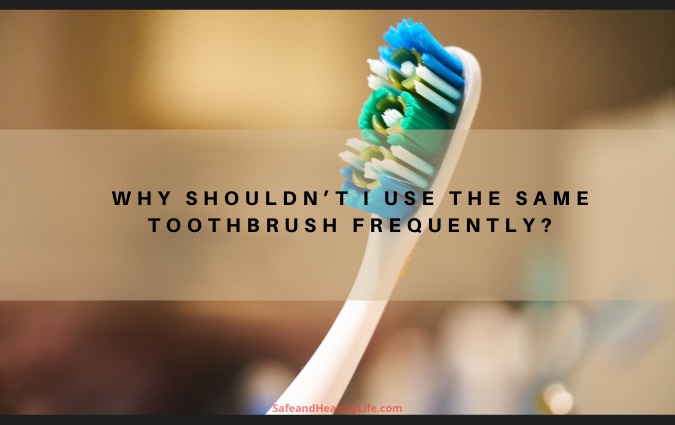Why Shouldn’t I Use the Same Toothbrush Frequently?

Have you bought a new toothbrush lately?
We toss out old meals, resupply more cosmetic products on a regular basis, and even buy more supplements.
However, when it comes to our oral hygiene, unfortunately, it is not on the top of our list.
There are, nevertheless, some guidelines to follow in order to maintain excellent dental health.
When Should You Replace Your Toothbrush?
According to the American Dental Association (ADA), every 3 months, you should replace your toothbrush. This is because a toothbrush loses its effectiveness at eliminating plaque from your gums as well as teeth over time.
This is due to regular wear and tear. According to studies, the bristles disintegrate and lose their efficacy after 3 months.
Another factor we don’t usually consider is that bacteria can lurk and accumulate in the bristles of a toothbrush. Because of this, it’s critical to replace it following a cold to avoid reinfection.
If not properly cared for, microbes, such as mold as well as bacteria can grow in the bristles. After each use, properly rinse your toothbrush, and don’t forget to dry it as well before storing it.
Make sure it is uncovered and stored in a standing position but separate from other toothbrushes.
Additionally, keep the head of your toothbrush covered to protect it and prevent germs from spreading.
If you are not sure how long you have had your toothbrush, look at the state of the head of your toothbrush.
Take a look at your bristles to see if they look worn, spread out, or ragged. Pay attention to any color change because this is a sign of mold.
What if I Don’t Change it Often?
If the fact that microbes grow on your toothbrush after a while isn’t enough to convince you to change it frequently, there are a slew of other hazards and unpleasant consequences to consider.
One concern is that your gums will be damaged as an outdated toothbrush becomes inadequate at eliminating plaque or tartar from your oral cavity, resulting in gingivitis. Gingivitis, if left untreated, can cause an infection.
This can, ultimately, lead to tooth loss.
Even more undesirable, a toothbrush that is used too frequently can make you ill, cause mold to develop, and, perhaps, the most unappealing of all, you can eat unwelcome substances if kept close to a toilet.
So, consider changing your toothbrush immediately and find the best dentist in your area. Make an appointment for deep cleaning.
What Should I Look for When Buying a Toothbrush?
To be honest, it depends on your specific needs, dental health, and other factors. To be sure of your individual needs, ask your dentist.
In general, search for a toothbrush with soft bristles. This is because bristles that are hard can harm both your teeth as well as gums. Select a toothbrush head that will only brush a few teeth at once.
The toothpaste should contain fluoride that has been approved by the American Dental Association. Also, purchase mouthwash, such as Listerine and Scope, to help combat gingivitis along with a plaque. Last but not least, floss regularly.
You should consider purchasing an electric toothbrush since it has been shown to promote oral health more than a manual toothbrush. It effectively eliminates plaque, minimizes gingivitis, and removes tooth stains.
An electric toothbrush has also been found to help people suffering periodontal disease by reducing plaque on their teeth.
General dentistry services are provided by your dentist and include dental checkups, examinations, etc. Call your local dentist today to schedule your appointment.
About The Author:
Ann Lewis enjoys the art of writing and has experience in various spheres of the craft. By blending information, with advice and impromptu jokes, she writes articles that not only have something to teach but are also light, easy to read.

